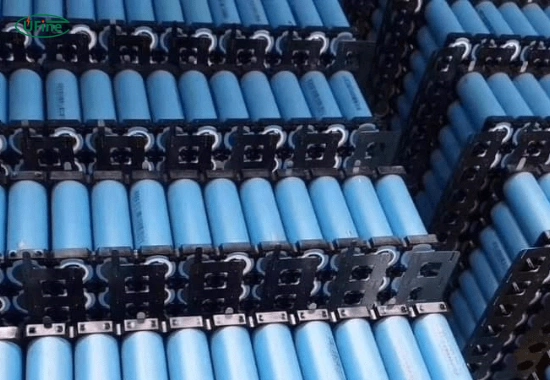In recent years, lithium battery technology has taken giant leaps forward. From powering smartphones to electric cars, lithium batteries are now everywhere. However, one innovation is gaining attention across industries: the ring battery pack.
So, what exactly is a ring battery pack? Why is it becoming so crucial in lithium battery manufacturing? And how has this technology evolved?
In this article, we’ll deeply dive into ring battery pack technology’s evolution, its current applications, and the future. Whether you’re a tech enthusiast, a battery manufacturer, or just curious about the future of energy storage, this guide is for you.
Part 1. What is a ring battery pack?
A ring battery pack is a type of battery structure where cells are arranged in a circular or ring-shaped formation. This layout offers several advantages, especially regarding thermal management, space efficiency, and power distribution.
Unlike traditional square or rectangular battery packs, ring battery packs are designed to fit around or inside specific components—such as motors, axes, or other cylindrical parts. This makes them ideal for limited-space applications like electric vehicles, drones, or wearable tech.
Part 2. Why is the ring battery pack design important?
The design of a battery pack affects its performance, safety, and efficiency. The ring battery pack stands out for several reasons:
- Better heat dissipation: The circular arrangement allows air to circulate more freely, helping to cool the battery more efficiently.
- Space optimization: It can be wrapped around other components, saving space and reducing the device’s overall size.
- Balanced power output: Uniform distribution of cells results in smoother power delivery.
- Improved safety: Even temperature distribution helps prevent overheating and potential battery failure.
These features are vital in devices where size, weight, and performance all matter.
Part 3. The origin of ring battery pack technology
Ring battery packs didn’t appear overnight. They are the result of years of innovation in lithium battery manufacturing. Early battery packs were large, bulky, and inefficient. Engineers started reimagining how battery cells could be arranged as demand grew for smaller, more powerful devices.
The birth of the ring battery pack can be traced back to the need for modular, compact, and efficient energy storage. Industries like aerospace and automotive pushed for creative battery layouts that fit into tight spaces without sacrificing performance.
Part 4. How lithium battery manufacturing evolved
To understand the evolution of the ring battery pack, we need to look at how lithium battery manufacturing has changed.
Key milestones in lithium battery manufacturing:
- 1991: Sony released the first commercial lithium-ion battery.
- 2000s: The rise of smartphones increased demand for compact, high-energy batteries.
- 2010s: Electric vehicles and renewable energy systems accelerated battery innovation.
- 2020s: Focus shifted to solid-state batteries, fast charging, and custom pack designs like the ring battery pack.
Modern lithium battery factories now use automated assembly lines, AI-driven quality control, and advanced materials, making it possible to create complex battery shapes like the ring format.
Part 5. Where are ring battery packs used today?
Ring battery packs are no longer experimental. They are used in many modern devices and systems. Let’s explore some key applications:
1. Electric vehicles (EVs)
- In-wheel motors and circular components in EVs benefit greatly from ring-shaped battery packs. They offer weight balance and efficient energy flow.
2. Drones and UAVs
- These devices require lightweight and compact power sources. Ring battery packs allow centralized power distribution around a rotor or shaft.
3. Wearable technology
- Smartwatches and fitness bands can use small-scale ring packs to maximize internal space while maintaining comfort and performance.
4. Medical devices
- Implantable or portable devices can use ring-shaped batteries to fit around biological structures or mechanical parts.
Part 6. What are the benefits of using ring battery packs?
Here’s a quick breakdown of why more engineers are choosing the ring battery pack:
- ✅ Efficient space use
- ✅ Better cooling and heat control
- ✅ Stable power delivery
- ✅ Custom-fit designs
- ✅ Modular and scalable
These advantages make ring battery packs perfect for next-generation electronics.
Part 7. Challenges in manufacturing ring battery packs
Even with all the benefits, there are still challenges in making ring battery packs:
- ⚠️ Complex assembly: The circular structure requires precise alignment of cells.
- ⚠️ Cost: Custom designs can be more expensive than standard packs.
- ⚠️ Heat management: While overall better, poor design can lead to hot spots.
- ⚠️ Material limits: Not all materials can be easily shaped into circular forms.
However, new materials and machine learning in manufacturing are helping to overcome these issues.
Part 8. Innovations driving the future of ring battery packs
Several technological trends are pushing ring battery packs to the next level:
1. Solid-state batteries
- These use solid electrolytes instead of liquids, making them safer and more flexible in shape.
2. 3D printing of battery components
- Allows custom battery shapes, including rings, to be printed on demand.
3. AI optimization
- Machine learning helps design battery layouts that balance power, heat, and space.
4. Smart thermal management
- Sensors and smart systems can now monitor and adjust battery temperature in real-time.
Part 9. How do ring battery packs compare to traditional battery packs?
| Feature | Ring Battery Pack | Traditional Battery Pack |
|---|---|---|
| Space efficiency | High | Medium |
| Cooling performance | Better | Average |
| Design flexibility | High | Low |
| Manufacturing cost | Higher | Lower |
| Power balance | More uniform | Varies |
In short, ring battery packs are more advanced, complex, and costly.
Part 10. What does the future hold for ring battery packs?
The future of ring battery technology is bright. As more industries adopt custom battery designs, we can expect the following:
- Smaller, more powerful devices
- Longer battery life
- Safer, cooler battery packs
- Lower production costs as technology matures
With the rise of electric transportation, IoT, and smart manufacturing, the demand for advanced battery structures like the ring battery pack will only grow.
Artikel Terkait: How to Custom LiPo Battery Packs?
Part 11. FAQs about ring battery packs
What is a ring battery pack?
A ring battery pack is a circular structure designed to fit around or inside components, offering better space use, cooling, and power distribution.
Are ring battery packs more efficient than regular ones?
Yes, in many applications. They offer improved thermal control, compact design, and better power balance.
Where are ring battery packs commonly used?
They are used in electric vehicles, drones, wearables, and medical devices—anywhere space and efficiency matter.
Are ring battery packs expensive?
They can be more costly due to custom designs and complex manufacturing, but prices are expected to fall as technology improves.
Can ring battery packs be recycled?
Yes. Ring battery packs can be recycled like other lithium-based batteries, though their shape may require specialized processes.
Related Tags:
More Articles

How to Choose the Right Electric Fence Battery?
Choosing the right electric fence battery is key to security. This guide helps you pick a reliable farm, garden, or animal power source.
What Are Lithium Pouch Cells?
Explore how lithium pouch cells work, their structure, advantages, and uses. Learn from a trusted supplier like Ufine Battery for custom lithium solutions.
Lithium vs Lithium Salt: What’s the Difference?
Lithium is a pure metal, while lithium salts are stable battery compounds. Learn their key roles and differences in battery manufacturing.
What You Need to Know About AA 3.6V Lithium Battery
Learn all about AA 3.6V lithium batteries—voltage, size, capacity, uses, and the best replacements. Discover why they’re powerful, and highly reliable.
What Are Lithium Salts and Why They Matter in Battery Electrolytes
Lithium salts in electrolytes are key to battery performance, powering everything from phones to EVs and shaping the future of clean energy.




